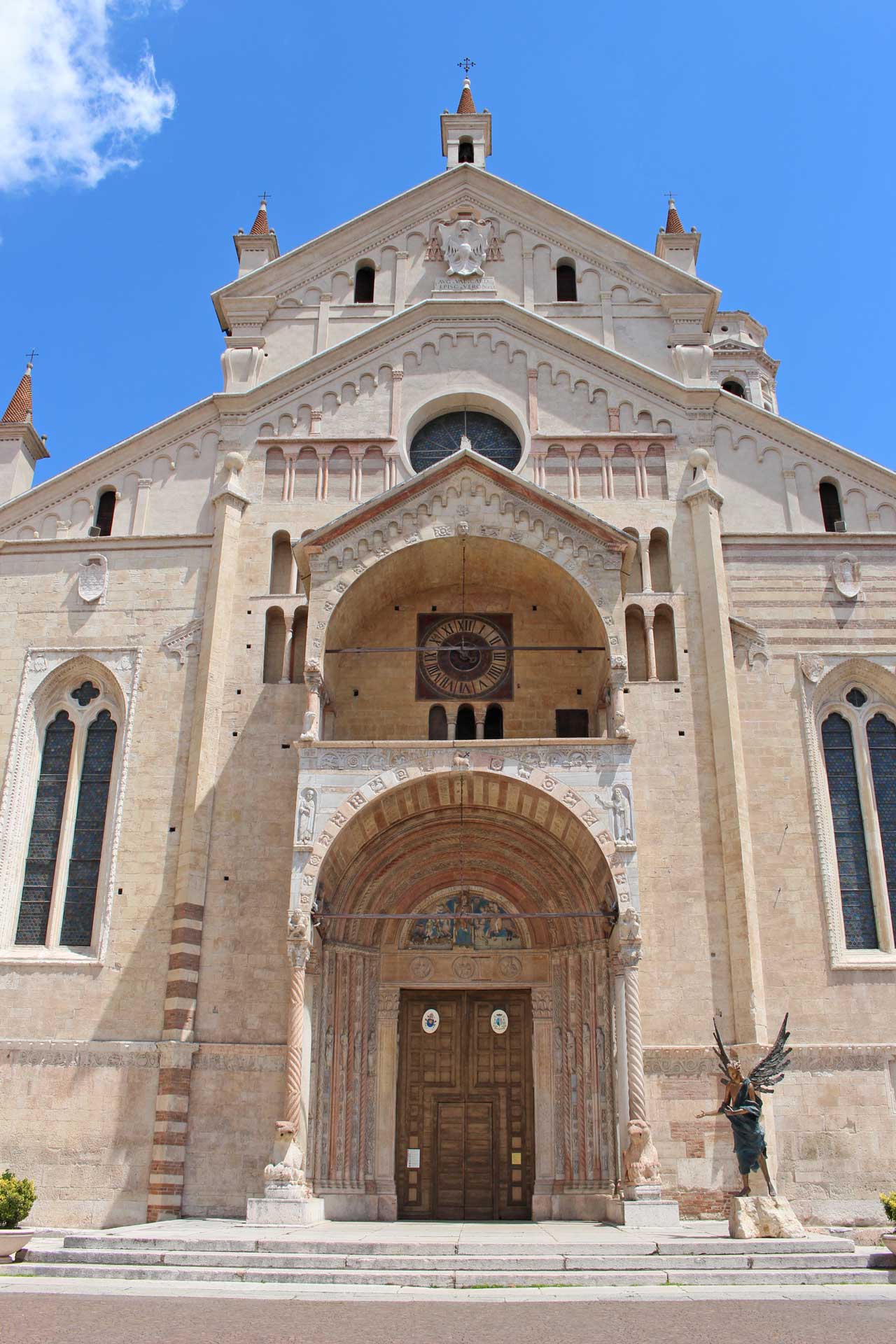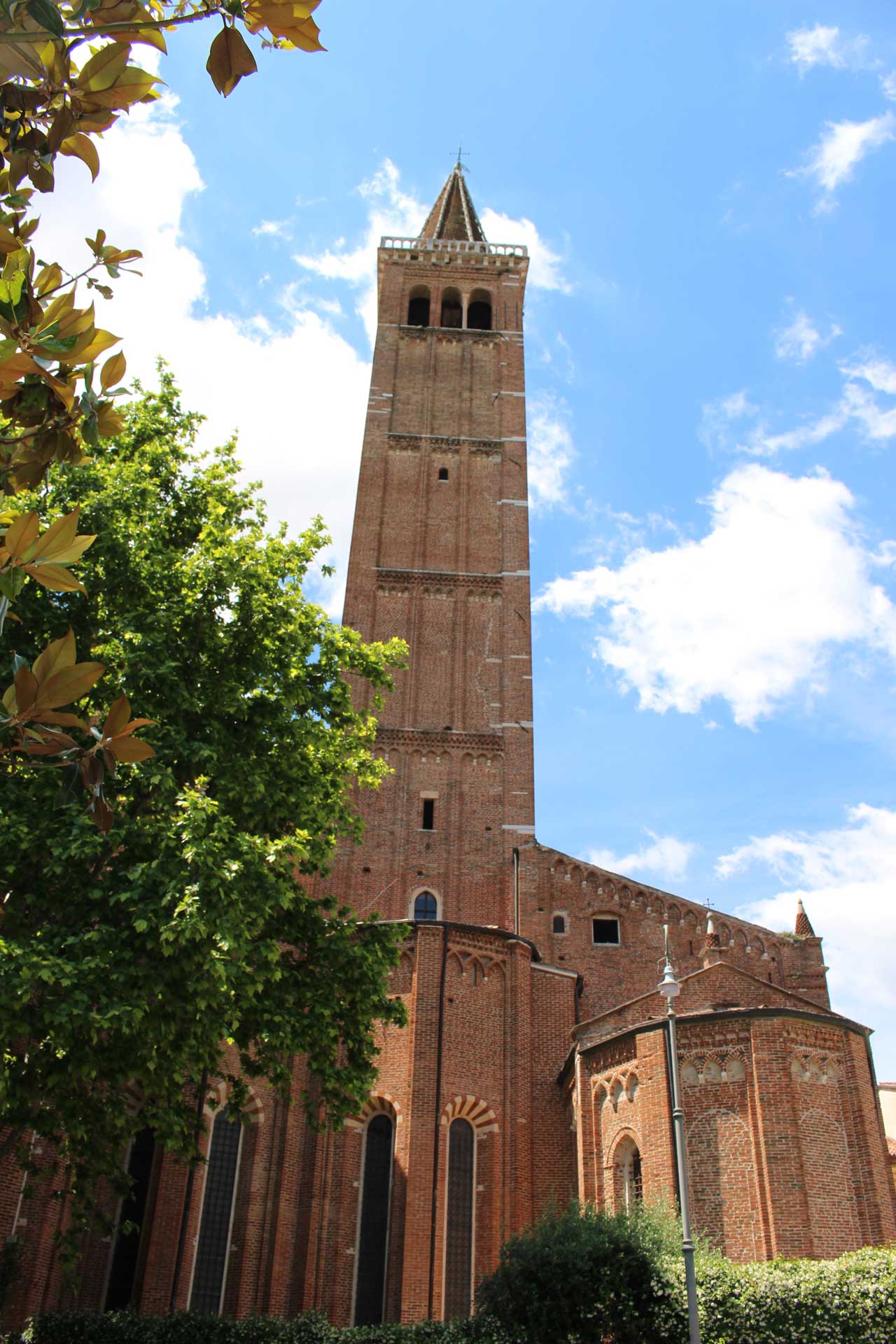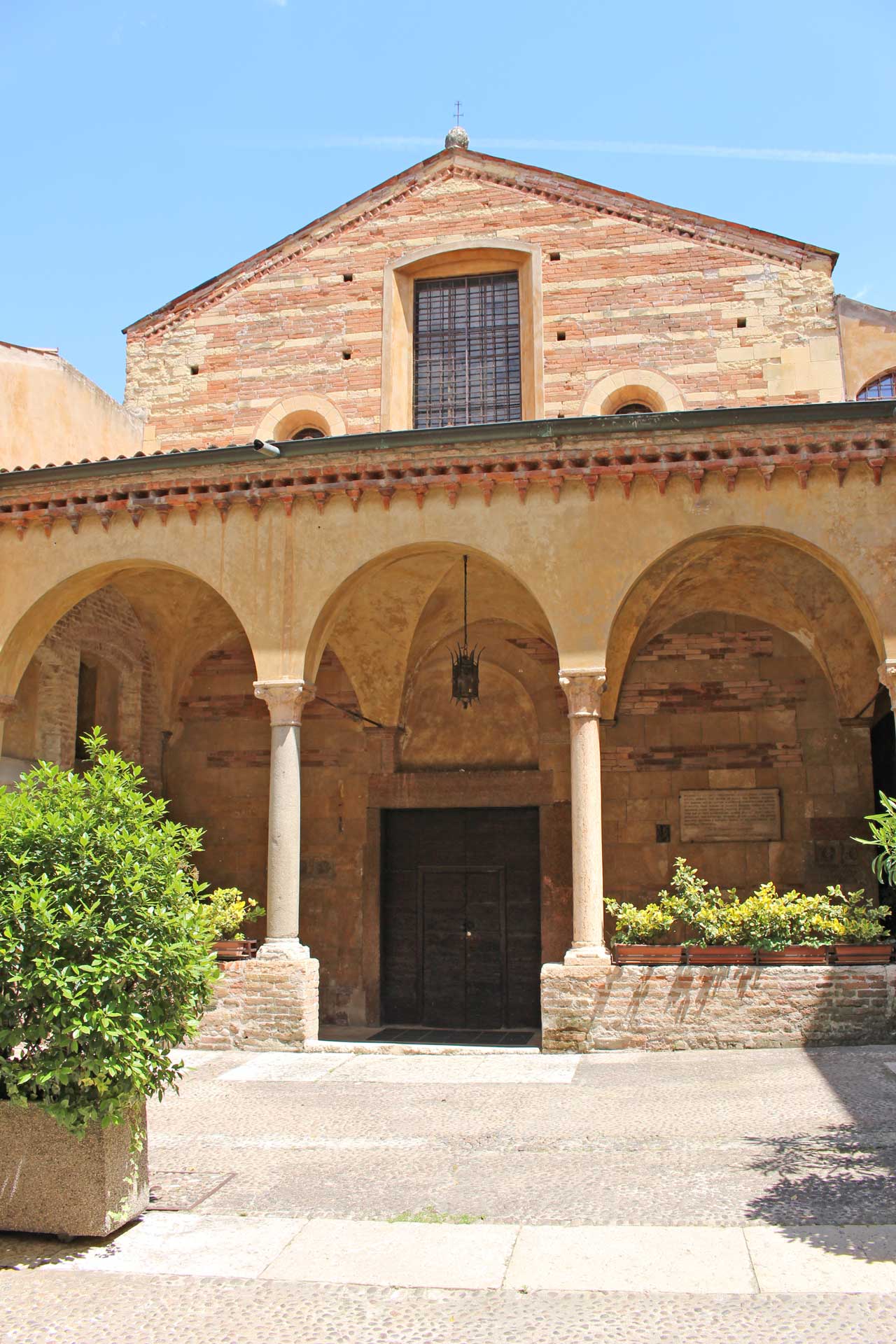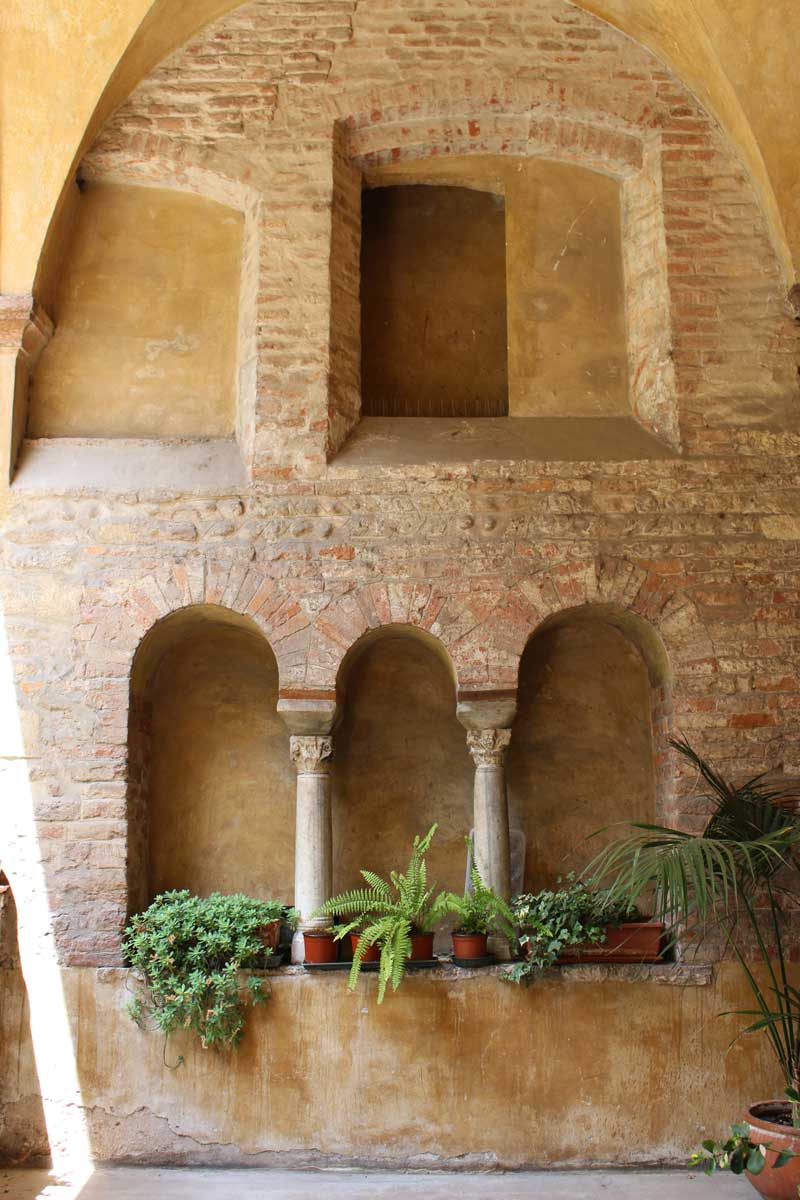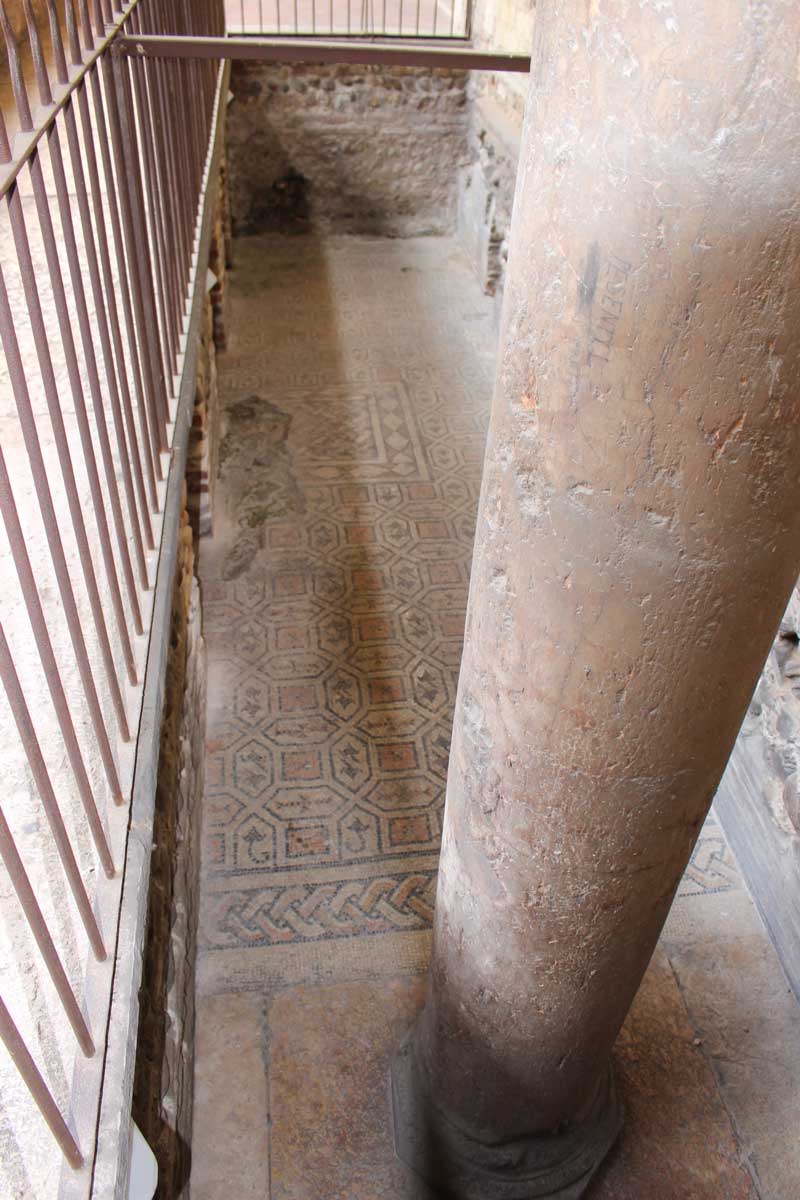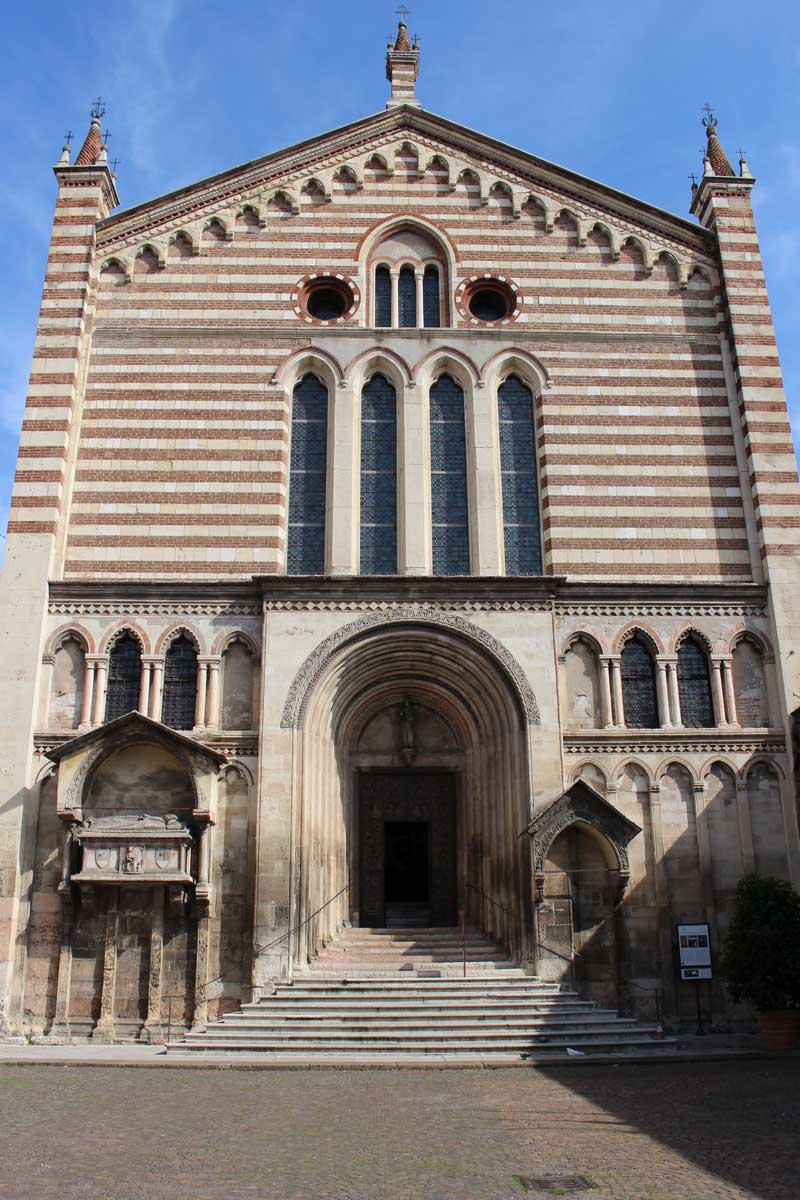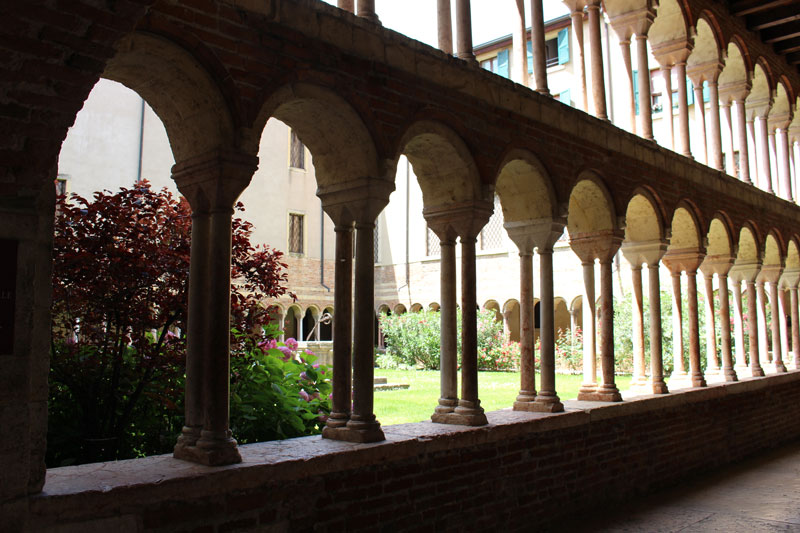Guided tour
SACRED ART
Art in churches and basilicas
Guided tour of 2 or more churches, tour duration from 2 to 6 hours.
Since the beginning of Christian history, Verona over the centuries has been enriched with churches and sacred buildings, where Veronese and Italian artists worked. They handed down to us masterpieces of Romanesque, Gothic and Renaissance art. These places that today we can visit with admiration in their architectural beauty, masterpieces of painting and sculpture, testify the strong faith and searching for God during the centuries. Today we can visit them as works of art and places to pray, symbols of a living faith in the community.
#1
Monumental
Sacred Art
#2
Sacred Art In Small Churches, Jewels Of Art And History
#3
Classical tour of Verona and visit to a church
#4
The synagogue of Verona and the Jewish Ghetto in the past
#1 Monumental Sacred Art
Guided tour of 2 or more churches, tour duration from 2 to 6 hours.
We will visit the symbolic churches of the city:
SAINT ZENO, THE CATHEDRAL COMPLEX, SAINT ANASTASIA, SAINT FERMO
- The basilica of Saint Zeno, dedicated to the patron saint of Verona, is a masterpiece of Romanesque art. Let’s discover together the famous porch of the master Nicholaus on the facade, the rose window presenting the theme of the “wheel of fortune”, the beautiful triptych by Andrea Mantegna on the high altar, the famous bronze portal and the crypt with the relics of the saint, the wooden ceiling from the 14th century, the elegant Romanesque cloister and interesting frescos.
- The basilica of Saint Anastasia, a jewel of the Gothic style, majestic and suggestive in its interior space, conveys a feeling of strong verticality, the frescoed ceiling elevates our gaze upwards, towards God. It is rich in altars and chapels, among which the Pellegrini chapel stands out with the famous Pisanello’s fresco “Saint George and the Princess”, a masterpiece of refined Gothic-courtly elegance. The beautiful canvas of the Humble Madonna, painted by Lorenzo Veneziano, is called by local people “The Madonna of the Rosary”. At the entrance of the church, two holy water fonts are supported by the famous and curious “Gobbi”, the HUNCHBACKS, that represent the efforts of the Veronese people in the construction of this large church, the largest in the city of Verona! Tradition says that touching hunchbacks on the hump brings good luck. The still functioning organ built in 1625 fills the church with its notes.
- The Cathedral Complex: the Cathedral is dedicated to Santa Maria Assunta. On the facade we can admire the double prothyrum by the sculptor Nicholaus (1139), inside there are beautiful altars, ancient organs and frescoed walls, the “Assunta” by Tiziano and many other masterpieces by local artists, the choir screen by Sanmicheli, the presbitery frescoed by Francesco Torbido on preparatory sketches by Giulio Romano, the tomb of Pope Lucio III.
The baptistery of St Giovanni in Fonte, which we can see today in its Romanesque forms. It houses the monumental monolithic baptismal font with an octagonal plan and frescoes dating from the twelfth to the fifteenth century.
The Vestibule of Santa Maria Matricolare, built in Romanesque times, is a covered walkway connecting the Cathedral and the Church of Saint Elena.
The Church of Saint Elena, built in the 9th century and renovated after the 1117 earthquake, where we will see the foundations and apse of the first palaeo-christian basilica built in the 4th century. Here Dante Alighieri in 1320 discussed his “Questio de aqua et terra”.
The beautiful romanesque Canons’ cloister, with the foundations of the second palaeo-christian basilica built in the fifth century. - The Church of Saint Fermo, built in the place where the Saints Fermo and Rustico were martyred in 304 AD. There are actually two churches: the lower Romanesque church built by the Benedictine monks, where we can still see sections of the foundation of the pre-existing palaeo-christian church of the fifth century and Romanesque frescoes on the pillars and walls; the upper church, rebuilt by the Franciscan friars, where the marvelous multiple-keeled wooden ceiling built in 1314 is decorated with 416 images of saints painted in tempera. We will admire the Mausoleum of the Brenzoni family with the beautiful pictorial decoration by Pisanello, frescoes, altars and works of sculpture.
#2 Sacred art in small churches, jewels of art and history
Tour duration 2-6 hours.
- San Lorenzo
- Santo Stefano
- Santa Maria In Organo
- San Giovanni in Valle
- San Giorgio in Braida
- Santa Maria Antica
- San Giovanni in Foro
#3 Classical tour of Verona and visit to a church
Tour duration 3-4 hours.
Classical guided tour of Verona and visit to a church choosing among Saint Zeno, Saint Anastasia, the Cathedral Complex, Saint Fermo.

#4 The synagogue of Verona and the Jewish Ghetto in the past
Tour duration 2-3 hours.
The Jewish presence in the city of Verona has been attested since the early Middle Ages. During the Venetian domination the ghetto was built near Piazza delle Erbe, in the historical centre of the city. Here Ashkenazi Jews and later Sephardic groups lived.
The ghettos were abolished in the Napoleonic era, so the Verona ghetto disappeared, too. It was dismantled definitively in 1924. The area where the ghetto was situated still houses the Ashkenazi rite synagogue, full of decorative symbolic elements. It was built in 1864, its beautiful façade was projected by the architect Ettore Fagiuoli in 1929. We can still see the tower-houses in Piazza delle Erbe, up to seven floors high. Verona has a Jewish Cemetery in Borgo Venezia area.
